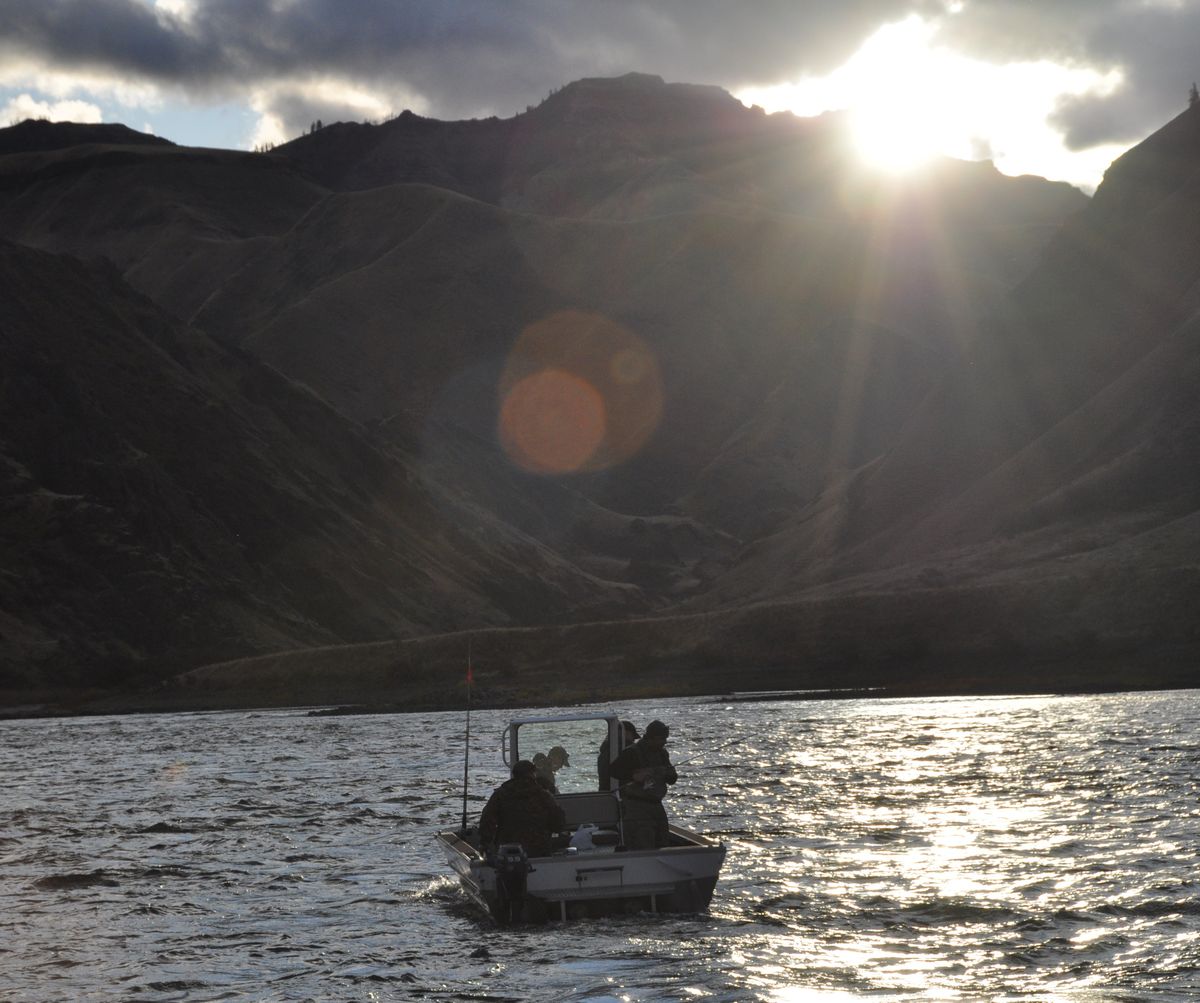As rush subsides, steelheaders revel in the wake of a record run
Steelhead anglers usually are on the Snake River well before sunrise as they pursue the large fish returning up the Columbia River system from the ocean in record numbers this fall. The fish will winter in the Columbia, Snake and other tributaries before spawning in spring. (Rich Landers / The Spokesman-Review)
The Snake River’s record run of steelhead has been parading upstream and delivering pleasure and profit from the mouth of the Columbia upstream 800 miles to the Salmon, Idaho, area— and beyond.
“We’re getting in about a hundred steelhead a week for smoking,” said Steve Egger of Egger’s Meats on Spokane’s South Hill.
Even though it’s more than 100 miles from the steelheading action, Egger’s is just one of countless businesses profiting from some 316,000 steelhead that have dodged hooks, nets, sea lions and detours into other Columbia tributaries to migrate up the Snake and over Lower Granite Dam toward Idaho and Oregon.
The previous record over Lower Granite was 269,281 fish in 2001.
The October surge of steelhead lured thousands of anglers and created traffic jams on the shores and waters of the Snake upstream from Lewiston and into the Grande Ronde.
“Catch rates were out of sight,” said Larry Barrett, Idaho Fish and Game Department spokesman in Lewiston. “Now the fishing is starting to settle down a little and the crowds have dispersed.”
The hottest steelheading last week had moved upstream into:
•The Grande Ronde near Troy, Ore., where anglers were averaging an exceptionally fast rate of three hours a fish.
•Upper Salmon River near the town of Salmon. A large portion of the run beelined to this area in October.
•Upper Snake River where migrating fish hit a dead end at Hells Canyon Dam, which has no fish ladders.
“There are thousands of extra steelhead at the base of the dam,” Barrett said. “Fisherman are catching a bunch and we’re trapping a bunch for the tribes and to put out for fishermen in other rivers. We’ve trucked several hundred fish for release in the Boise River and Oregon has released some in the Powder River.”
But that doesn’t mean the fishing isn’t good in the popular area of the Snake and Grande Ronde near Asotin.
“I know this isn’t as crazy-fast as it was in October, when we hooked dozens of fish a day, but it’s still pretty darned good fishing,” said veteran Snake River fishing guide Pete Paolino. He was wrapping up a recent day with five clients who had boated a total of nine steelhead while backtrolling plugs behind his jet boat.
“The fish have moved up and soon will be settling in somewhat (for winter),” said Glen Mendel, Washington Fish and Wildlife department fisheries biologist. Cooler water temperatures and shorter days tend to make the fish slow their migration.
The number of fish moving over Lower Granite Dam last week had finally dropped below 1,000 a day.
“The fishing is very slow in the Columbia below the Snake River, where anglers are averaging 132 hours a fish but the rates recently have been as good as 3.8 hours a fish upstream from Lewiston,” Mendel said. “That’s phenomenal.”
Anglers often comment that they catch more wild steelhead – a small portion of the overall run – than this year’s abundant fin-clipped hatchery fish, which anglers can keep for eating.
“The steelhead tend to move upstream into portions of the river in pulses,” Barrett said. “When you have heavy fishing pressure, or several boats of four to six guided anglers working down through hole after hole, they start to select out the hatchery fish and pretty soon you have a disproportionate number of wild fish until a new pulse of steelhead comes in.
“Steelheaders live through feast and famine in the number of fish holding in a stretch of the Snake or Grande Ronde through the course of a week.
“The best weather for steelhead fishing is a series of wet systems. You want enough rain upstream to bring the river up a little and turn it a bit off-color for a couple of days. Then you can expect to have really good fishing right after that until fishermen deplete the numbers in the local vicinity.
“Ideally, you want more rain and another pulse of fish about every week.”
Steelhead will become less active as the weather becomes cooler and they will not travel as far for a fly or a lure.
With many anglers going hunting or losing interest, the remaining anglers have more elbow room to fish the rivers a little more thoroughly, rather than moving quickly from spot to spot.




















